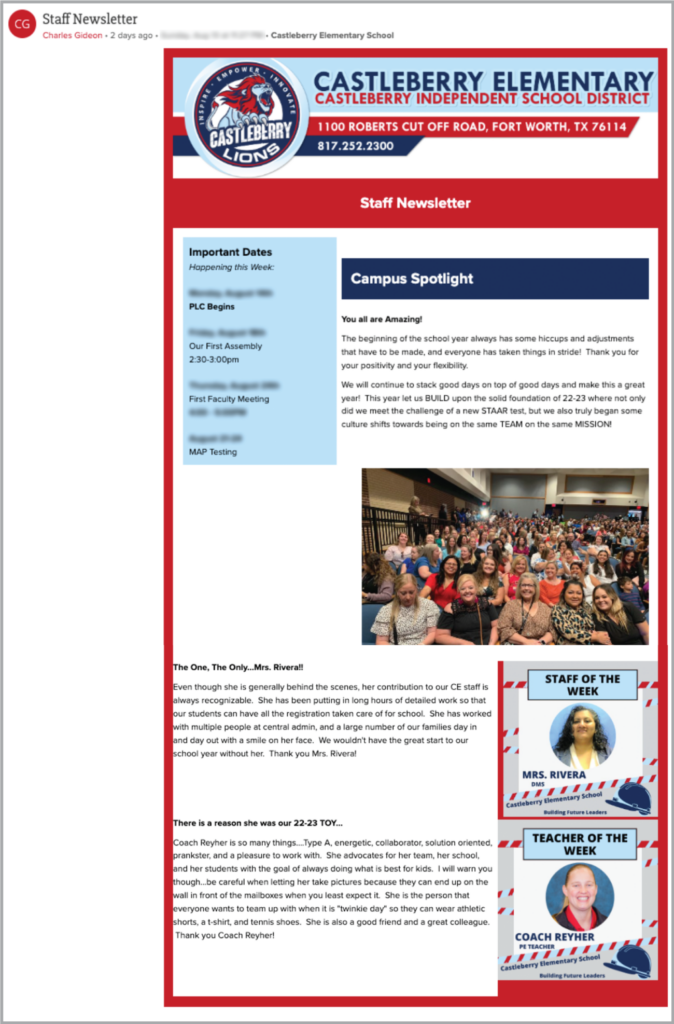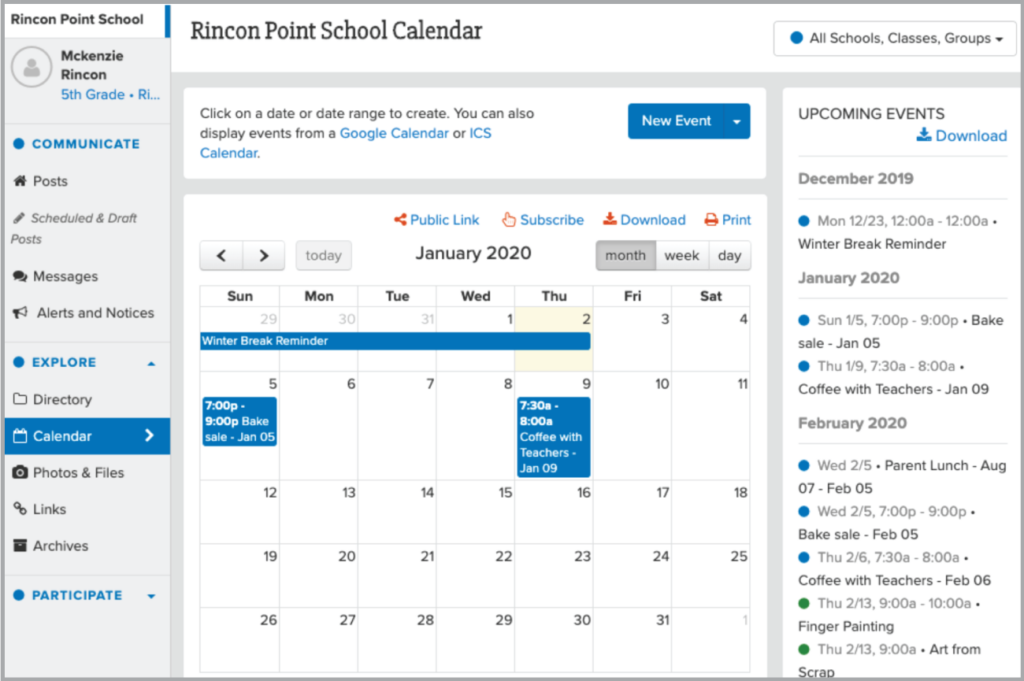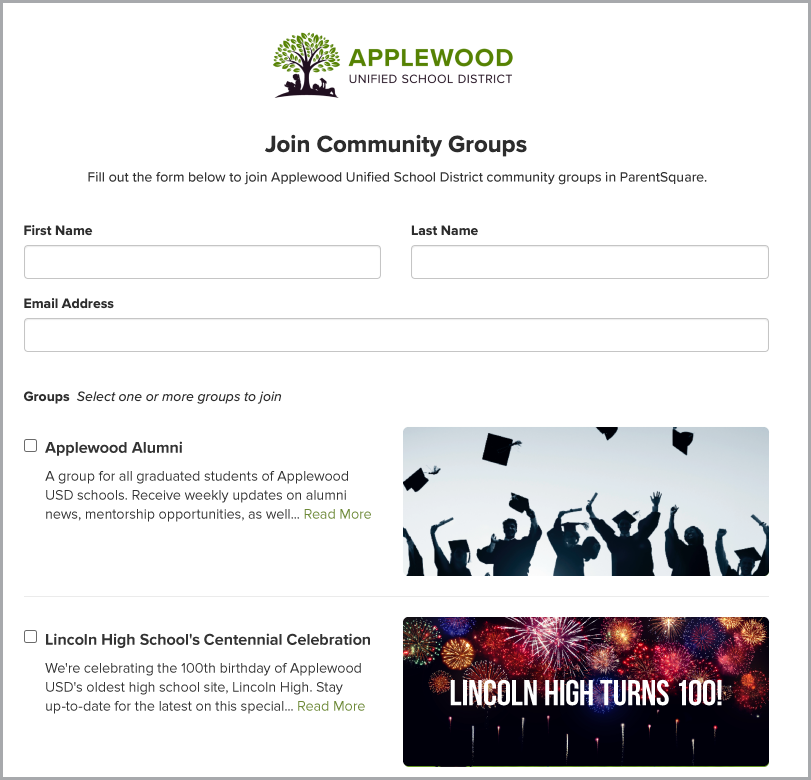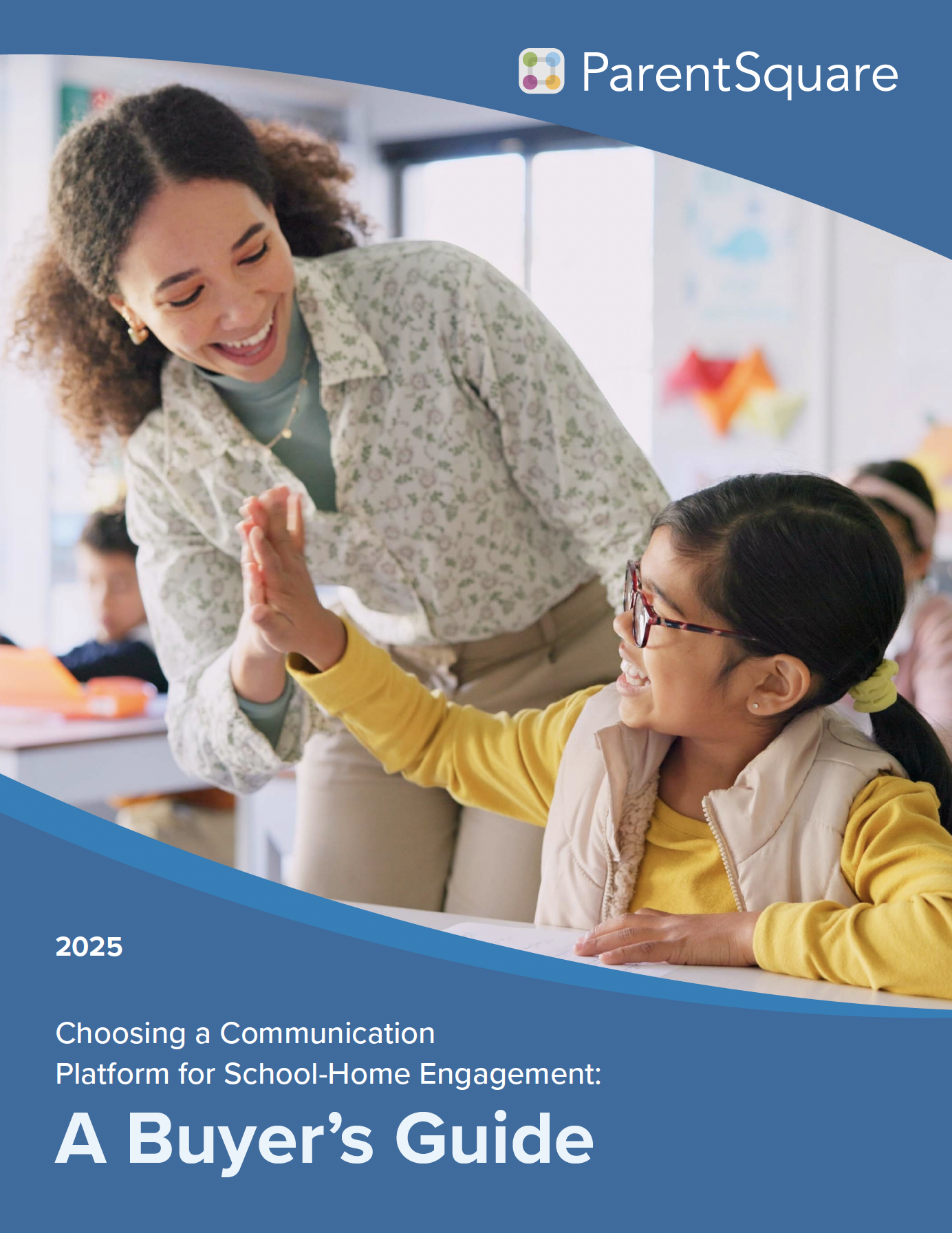
As a school superintendent, one of your key responsibilities is building strong relationships with various stakeholders in your school community. These relationships foster trust, collaboration and a shared commitment to the success of students. In this blog, we will explore effective strategies to build strong relationships with staff, families and community members.
First, the order in which we present each group holds a very important purpose. It is vital to start at the core of your network – your staff – to build strong relationships because they will always be your biggest advocates. We recommend that you share news with your staff first whenever possible so they know they are a valued member of the school community.
Once your staff relationships are established, move out to the parents and guardians of your students. This group is important to connect with, especially in communities where families have many options for educational institutions. They also often share the interesting and engaging ways your staff is interacting with their children, which can be important for reaching your third group – community members.
For the last layer, focus on building relationships with community members – especially those that don’t have children in your schools. This can be one of the most challenging groups to reach and for good reason. If you don’t have children or grandchildren at the local schools, you probably aren’t paying close attention to news from the school. But this group can also be the one with the biggest impact financially, particularly for public schools that depend on tax-payer dollars and donations to function.
Let’s dive into each group and explore some strategies you can implement today to begin improving your relationships.
Staff
Foster a supportive culture
Create a supportive and inclusive culture where staff members feel valued, respected and empowered. Encourage open communication, practice active listening and be receptive to feedback. Provide opportunities for professional growth and recognize achievements. By fostering a positive work environment, you will build strong relationships with your staff and cultivate a sense of collective purpose.
Promote collaboration and teamwork
Encourage collaboration and teamwork among your staff members by facilitating regular meetings, professional learning communities, or workshops that promote sharing of ideas, best practices and experiences. Welcome cross-departmental collaboration and provide platforms for staff to engage in collaborative decision-making processes. Emphasize the importance of collective efforts in achieving common goals.
Recognize and appreciate efforts
Acknowledge and appreciate the efforts of your staff by celebrating achievements, milestones and exceptional contributions. Implement recognition programs or initiatives that highlight outstanding work. A culture of recognition and appreciation strengthens relationships and boosts staff morale and motivation.
![]() A great way to recognize staff members is through newsletters. Within ParentSquare, these can easily be sent internally for district staff member communications or within all district communications to families and students – either way it’s always fun to see awards and shout-outs from your superintendent! Customize your own newsletter templates for your needs and send out to specific groups, schools, or staff members.
A great way to recognize staff members is through newsletters. Within ParentSquare, these can easily be sent internally for district staff member communications or within all district communications to families and students – either way it’s always fun to see awards and shout-outs from your superintendent! Customize your own newsletter templates for your needs and send out to specific groups, schools, or staff members.

Here are some additional ways you can connect with staff to ensure they feel valued and supported:
- Regular check-ins: Schedule regular small group check-ins with staff members to discuss their professional goals, challenges and feedback. Superintendents have seen success in hosting bi-annual lunch visits in their school buildings where staff can join them to share feedback.
- Visible presence: Make an effort to be visible and approachable within the school environment. Regularly attend school events and staff meetings to show your interest and involvement. We recommend setting up a regular rotation of your school buildings to ensure these visits don’t get pushed behind other tasks.
- Listening sessions: Consider hosting more formal listening sessions or town hall meetings where staff members can express their opinions, ask questions and share their experiences. This gives them a platform to voice their concerns and feel heard and can be particularly helpful when big projects are underway, such as construction or redistricting.
- Wellness initiatives: Implement wellness programs that promote physical, mental and emotional well-being. Offer resources such as stress management workshops, mindfulness sessions and access to counseling services. Asking staff what would be most useful for them in this area is a good icebreaker topic at your regular check-ins.
- Personal connection: Take an interest in staff members’ personal lives and well-being. Show empathy and offer support during challenging times. Consider sending notes or flowers for big life events, like the loss of an immediate family member or the birth of a new child. Connecting with your human resources team can be particularly helpful here since staff will be submitting requests for time off in these instances.
Parents and Guardians
Establish open and transparent communication
Perhaps the most important first step to building a strong relationship with your school families is to establish open and transparent communication channels. Be clear about where they will get their information and be consistent throughout the school year. Utilize a digital platform to share important information, upcoming events and school initiatives. It’s vital to be responsive to their questions, concerns and feedback. By using direct dialogue and addressing any queries or issues, families will know they are an important part of their child’s education success.
Involve families in decision-making
Involve parents and guardians in decision-making processes that impact their child’s education as often as possible. Seek their input and feedback through surveys, focus groups or advisory committees. Collaborate on initiatives such as curriculum development, school policies or family engagement programs. Engaging families in meaningful ways demonstrates respect for their perspectives and strengthens the partnership between home and school.
Create opportunities for engagement
Provide various opportunities for parents and guardians to actively engage in their children’s education. Organize workshops, seminars or webinars on topics of interest, such as parenting strategies or academic support. Encourage parental involvement in school events, committees or volunteering. By fostering meaningful engagement, you build trust and collaboration between families and the school community.
Consider attending these events for regular engagement with families:
- Open houses and orientations
- Cultural celebrations
- Volunteer opportunities
- Student showcases
- Fundraisers
- Art and science shows
- Band, choir and theater performances
- Athletic events
- Club events and competitions
Being in a separate district office can often leave superintendents feeling disconnected from everyday school activities. One useful way to stay on top of events like these and other fun activities is to have your communications coordinator or assistant add them to a calendar for you. Communications teams are often more knowledgeable about fun events for photo opportunities and are a great resource for keeping you informed. You may not be able to make it to every fun event at every school, but by having the calendar, you are able to see your options when you do have time to fit something in.
![]() A great way to stay connected to all the events within the district is through the ParentSquare calendar. Each level within ParentSquare (group, class, grade, or school) can have its own calendar and is available to those with access to each. The calendar really comes in handy when for needs of an athletics calendar for each sport or a field trips calendar for a grade. All you need to do is create a public group and add a calendar to the group. Then, at the admin level, you’d be able to see all of these calendars within your calendar (or filter as needed), keeping you in the loop on what events to be at and when.
A great way to stay connected to all the events within the district is through the ParentSquare calendar. Each level within ParentSquare (group, class, grade, or school) can have its own calendar and is available to those with access to each. The calendar really comes in handy when for needs of an athletics calendar for each sport or a field trips calendar for a grade. All you need to do is create a public group and add a calendar to the group. Then, at the admin level, you’d be able to see all of these calendars within your calendar (or filter as needed), keeping you in the loop on what events to be at and when.

Community members
Be visible and accessible
Be visible and accessible to the community. Attend local events, participate in community organizations, and establish partnerships with local businesses or institutions. Actively engage in community discussions and demonstrate your commitment to the overall well-being of the community. By being present, you build trust and create opportunities for collaboration.
Collaborate on community initiatives
Identify opportunities for collaboration on community initiatives that align with the goals of the school district. Partner with community organizations, non-profits or government agencies to address common challenges or support shared goals. Engage in joint projects, volunteer initiatives or community service activities. Collaboration strengthens relationships and demonstrates a collective commitment to community success.
Communicate the impact of education
Share the positive impact of education on the community. Highlight success stories, student achievements and contributions of the school district to the community. Utilize various communication channels, such as social media, newsletters or local newspapers, to showcase the value of education and the important role the community plays in supporting it. Building a narrative of success fosters community pride and support.
We gathered some fun ideas to showcase education in your community:
- Run social media campaigns recognizing graduates in certain career fields, like a week to recognize graduates that went into healthcare
- Feature full-length articles in your newsletters on a graduate that’s making a big impact in the community or beyond
- Invite influential community members to career days to share their stories
- Share photos and videos of students volunteering in your community on social media and your website
- Connect with local government officials to provide student internship opportunities and feature these connections on your website, social media and newsletters
- Work with community partners to host back-to-school events to support families on all fronts with a range of resources
![]() Need a way to communicate with those in your community, but don’t want to give too much access to information? The Community Groups feature within ParentSquare offers a self-serve sign-up for alumni outreach, athletic programs and teams, special events, school boards, and other communications that would benefit community members outside of the district or individual schools. District admin, school admin or group owners may send posts to the community group and allow for them to stay connected, informed and be an important part of the school district.
Need a way to communicate with those in your community, but don’t want to give too much access to information? The Community Groups feature within ParentSquare offers a self-serve sign-up for alumni outreach, athletic programs and teams, special events, school boards, and other communications that would benefit community members outside of the district or individual schools. District admin, school admin or group owners may send posts to the community group and allow for them to stay connected, informed and be an important part of the school district.

Building strong relationships with staff, parents and guardians, and community members is essential for the success of a school district. By implementing these strategies, you can cultivate an environment of collaboration, trust, and shared goals. Strong relationships contribute to a positive and thriving school community that supports the growth and development of all students.
ParentSquare is here to help you build strong partnerships that empower your students and foster lifelong learners within your communities. Learn more about these features and many more by booking a demo today!







